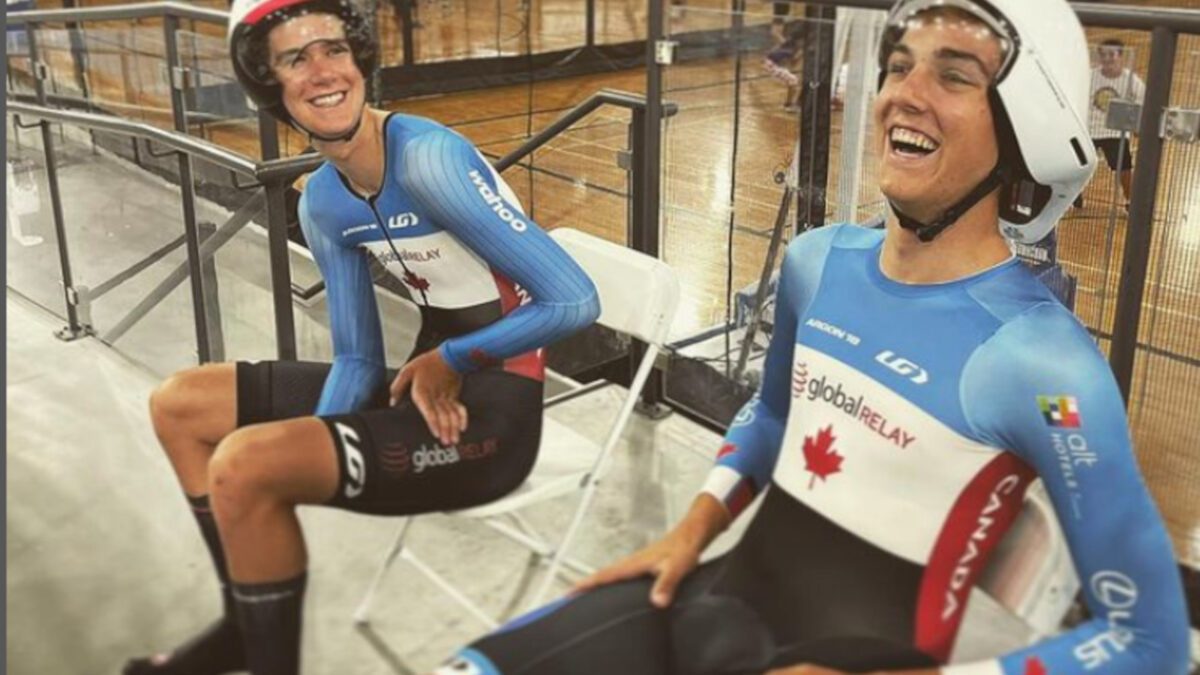The Canadian junior men’s TP squad would have lapped the ‘90s elite men’s national team
Canucks qualified second at world champs in Israel
 Photo by:
Carson Mattern/Instagram
Photo by:
Carson Mattern/Instagram
On Tuesday, the Canadian national junior team rode 4:07 to qualify second in the 4 km team pursuit, would go on to finish fifth overall after a blistering 4:06 in the first round. The squad, which includes world champ Carson Mattern, Gavin Hadfield, Charles Bergeron and Campbell Parrish are in Israel at the Sylvan Adams Velodrome for the junior world championships.
The time is all the more impressive as the track itself is covered, but not indoors. So that means there was a slight breeze during their qualification. In 1994, the Canadian elite men rode 4:26 in Victoria at the Commonwealth Games, just shy of a medal. The team was led by one of Canada’s best professional cyclists, Brian Walton, along with future WorldTour rider Michael Barry, as well as Tim Hadfield and Paul Henderson. They would average 54 km/h, compared to 58 km/h of the juniors.
Granted, Victoria is outdoors and can be windy, but it certainly underscores the speeds of the junior men and women of today. In 1997 in Trexlertown, PA., the Canadian elite men’s squad would ride 4:36 at the EDS cup, an international track meet. That team, including Hadfield, Henderson, Glen Rendall and the most handsome cyclist of the ’90s, Matt Hansen, would have been lapped almost…twice, by the current junior team.
Why are the juniors so much faster? Sure, bikes are undoubtedly quicker. And of course, an indoor velodrome is many times faster than an outdoor track. Consider riding outside: on the straightaway a team pursuit team could get it up to speed, say 55 to 56km/h, only to make the turn and then feel the headwind: the speed might drop below fifty. And then once you make turn three, you’ll have to accelerate again, only to decelerate by turn two.
Those are obvious factors, but more importantly, the fact that juniors can ride indoor tracks such as the Mattamy National Cycling Centre and get coached all year round, most certainly helps. With facilities such as Milton, Bromont or the new Edmonton track, the talent pool is expanding which means faster riders, with more coaches and more support.
Starting today is the Junior Track ? Championships where 1️⃣0️⃣ young athletes will race against the best in the world to gain some incredible experience + a chance to wear their own ? stripes!
Follow the live results ? https://t.co/tgGkljb6Mw
? David Jack pic.twitter.com/u5xsmwYxMK— Cycling Canada (@CyclingCanada) August 23, 2022
Team pursuit is of course an incredible test of fitness, but it’s also very technical. A faster exchange by riders means a more efficient and quicker ride. Juniors being able to practise and hone their skills is a fantastic advantage. In the past, juniors might only be able to practise with their teammates for a few weeks before the nationals or world championships.
The junior track world championships in Tel Aviv are taking place August 23-27.
